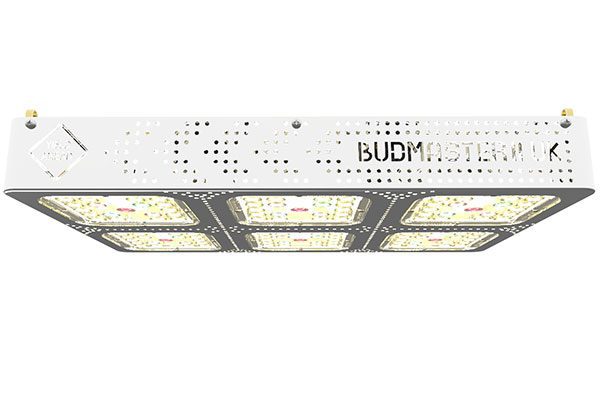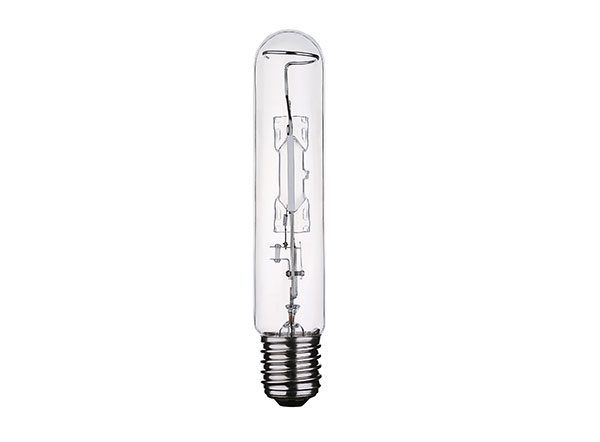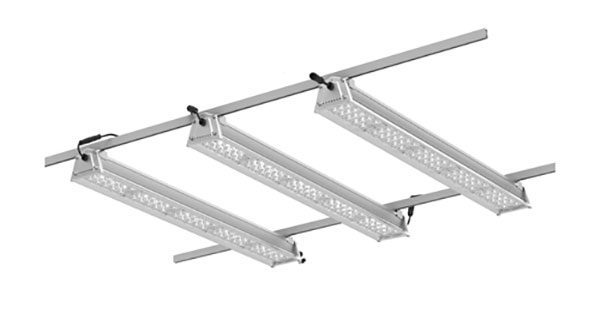An often overlooked essential tool for growing is eye protection. Every grower should be wearing horticultural eyewear that offers 100% protection from the harmful glow of the lights, while also not compromising on color or clarity of vision.
It is essential to have a basic understanding of how light works, how it can damage your eyes, and what you need to look for when purchasing a pair of horticultural glasses.
Horticultural grow lights reproduce powerful light waves emitted by the sun to fuel the process of photosynthesis. Exposing your eyes to these lights in such proximity and for long periods can result in migraines, headaches, cataracts, macular degeneration, pterygium, sight loss, and even cancer. Vision is compromised, affecting colour perception, visual clarity, and the ability to focus on shapes and motion, which has an impact on safety and productivity in the grow room.
Working under intense grow lights (especially HPS) puts you at risk of the strobe effect; the lights dimming and then brightening again as the electrical voltage cycles through the lamp. Although the brain compensates for this effect, it can still cause headaches or other associated illnesses, including photosensitive epilepsy.
How Light Works
Wavelengths of light are measured in the metric unit of nanometers (nm). Visible light ranges from 400-700nm. A nanometer is equal to one billionth of a meter! It can be a hard subject to grasp, but all you need to remember at this stage is that the lower the nm measurement of the wavelength, the more energy it has and the more of a risk it poses to you.
The visible light spectrum is a form of electromagnetic radiation and is light that we can physically see. The range is made up of all the colors of the rainbow. Red begins on the left and moves to the right through orange, yellow, green, and blue. Collectively, this is what is known as sunlight, or “balanced white light” (BWL). The colors are arranged naturally by wavelengths; red has the longest wavelength and is low energy, while blue has the shortest and the most amount of energy.
At either end of the visible light spectrum, you have invisible electromagnetic radiation. Just beyond red, there are warming “infrared” rays with a wavelength of 700nm per millimeter, so not very harmful at all. In contrast, just past the blue end of the spectrum, you have invisible electromagnetic rays which have the shortest wavelengths and the highest energy, posing the biggest threat to our health. This lighting is known as ultraviolet light or ultraviolet radiation.
Along with many other conditions, UV light can burn the skin and damage eyesight, causing photokeratitis (snow blindness), which is sunburned eyes.
The Three Types of UV Light
UV-A light (400nm-320nm) has the longest wavelength, compromising about 3% of the photons in natural sunlight that make it through the Earth’s atmosphere and is the least harmful.
UV-B light (320nm-290nm) is more threatening, causing cellular damage in both humans and plants. It makes up less than 0.15% (that’s less than 1/5th of 1%) of total natural sunlight. In a natural environment, about 95% of this light is luckily absorbed by the ozone layer.
UV-C light (290-100nm) is the most harmful of all, but luckily, in the natural environment, it is almost entirely absorbed by the Earth’s atmosphere. UVC is so damaging that it can be used in the process of sterilization because it kills living cells.
UV light can be useful to plants with general research showing that both UVA and UVB light assist with increased production of antioxidants/flavonoids.
Grow lamps provide light containing all colors of the spectrum to mimic balanced white light. A generic plant’s life cycle tends to see it favor blue light during the vegetative period, and red during the flowering phase.
How Our Eyes Work
The eyes work naturally to help us perceive color, shape, and motion, and grow room lights can potentially disrupt this. Simply put, there are two kinds of photoreceptor cells in the back of our eyes, cones, and rods. There are roughly 7 million cones in each eye that respond best to lightwaves in the yellow to orange light spectrum. Likewise, there are approximately 120 million rods in the back of each eye that respond best to lightwaves in the blue light spectrum.
Cones and rods work together, with cones detecting color and rods detecting movement and shapes. While most natural and indoor light conditions provide a sufficient spectrum to allow both cones and rods to work together effectively, grow lights do not. HPS lights give only a limited spectrum of yellow light, overstimulating cones and understimulating rods. This impairs not only our perception of color, shapes, and movement but also causes physical effects of eye strain in the form of headaches, migraines, and more.
Grow room lights significantly affect our eyes; look at the scotopic to photopic ratio (S/P ratio) for proof. The S/P ratio is the amounts of blue (scotopic) to yellow (photopic) light that our eyes need for the cones and rods to work correctly. In natural light conditions, the S/P ratio is about 2.5, and the eye needs a ratio of at least 2 to see clearly. This ratio drops dramatically to a mere 0.6 when the eye is exposed to HPS lights. If that statistic doesn’t get you wearing eye protection, nothing will!
There are many things to take into consideration when purchasing horticultural eyewear, and the final choice should have a lot to do with the type of lighting used in the room.
HPS lighting
These are probably the most popular lamp choice for growers, hobbyist or commercial, due to the high amount of lumens of light provided. HPS conditions present as an intense yellow spectrum, under which it is impossible to recognize natural colors.

When buying HPS-specific horticultural protective eyewear, look for a mineral glass lens. HPS light induces the harshest environment, and a glass lens offers the most protection because it filters out the strobe effect and brings the S/P ratio up from 0.6 to 1.4. That is a whopping 70% nearer to the “holy grail” natural light ratio of 2.5! Color balance ends up being a lot closer to what the naked eye would see in a natural outdoor environment.
Other desired qualities in HPS eye protection include a lens that will absorb any infrared heat and a frame that is lightweight, durable, and comfortable to wear with no slippage. If possible, choose a lens that has no emulsions or dyes so as not to interfere with visual clarity. A silver coating on the lens is useful (but not essential) and makes glasses even hardier for high wattage environments, or, outdoor wear. It goes without saying that they come with 100% UV protection. Protective eyewear with polycarbonate lenses is also useful under HPS lighting; however, glass is best.
MH lighting
Metal Halide lighting conditions are not as harsh as HPS, and so eyewear with polycarbonate lenses will do the trick. MH lamps emit balanced white light with a broad spectrum and are well suited for plants during the vegetative stage. However, low red light output has many people introducing an HPS light during the flowering cycle when plants demand more of the red spectrum. When choosing protective lenses for this environment, select a pair that will retain the color and clarity of the grow room while also offering 100% protection against the UVA, UVB, and UVC rays that MH lamps produce along with infrared heat.

Polycarbonate lenses are a great option and can come with a silver coating to suit the intense conditions of a metal halide environment and also double up as stylish, everyday eyewear perfect for outdoor conditions. A polycarbonate lens will significantly reduce the effect of strobe lighting, minimizing any potential health risks. They improve color balance, shape recognition, and the ability to detect motion, providing an S/P ratio of 1.0, up from 0.6. That is 50% closer to the ideal S/P ratio of 2.5 in normal BWL conditions. Mineral glass lenses are also suitable for working under metal halide lamps.
Do not be fooled into thinking that a pair of regular expensive sunglasses will do the job as effectively. Polycarbonate (and glass) lenses are far superior to those of regular sunglasses, which fail miserably in all areas, as they are just not built for grow rooms. The lenses on regular sunglasses filter out more blue light (scotopic) than yellow (photopic), taking you further away from a natural color balance and down to an S/P balance of 0.4-0.5!
LED lighting
The LED lighting is a developing technology that is continuously breaking new ground and provides a unique spectrum of light. It makes sense, therefore, to buy a pair of specialist LED grow glasses that are specifically designed to work under these conditions. Again, look for high quality that doesn’t compromise on color or clarity.

Another must is 100% protection against UVA, UVB, and UVC rays, as well as against the extremes in blue light that are prominent in LED lighting. Many styles of horticultural eyewear are designed to work with magenta LED’s (made up of just blue and red light), but it is also possible to get LED specific eyewear for use with full-spectrum lighting.
If you value your vision, then buy a product of some significant value to protect it. A good pair of specially engineered grow room glasses may save your sight, and in some cases, even your life. Consider it an investment. Don’t grow blind doing the thing you love; protect your eyes.